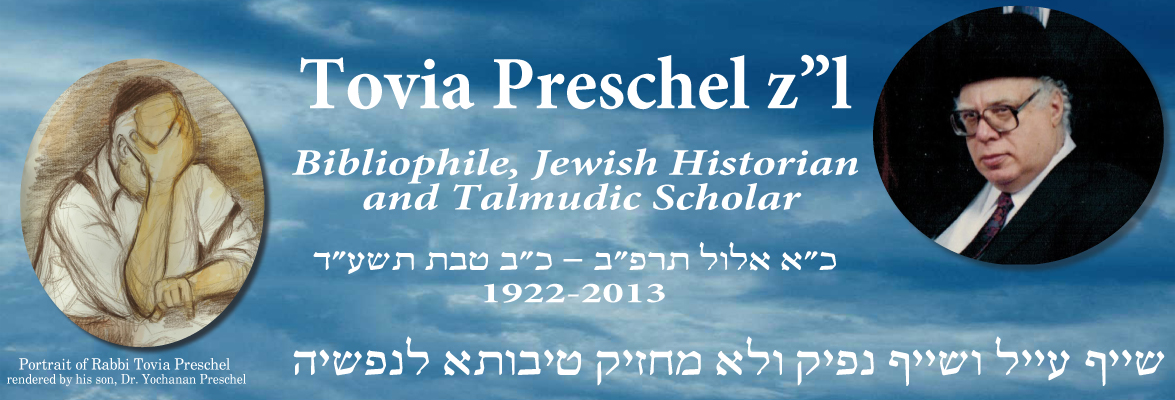Sulzburg is a small town in south-western Germany, not very far from the Swiss city of Basel. Jews first settled there in the 15th century, In 1546 they were granted the right to maintain a synagogue and engage a rabbi and teacher. In 1577he Jews were expelled from the town. More than 80 years later, in 1664, they were again permitted to reside there. From then until the destruction during the Nazi era, a small but flourishing Jewish community existed in the town.
Until the rise of Nazism, he relations between the Jews and their neighbors were generally cordial. It was a very observant community. A Jewish woman of Sulzburg in her memoirs, describes the Jews of the town as ‘strictly religious, occupied with all mitzvoh including maaser (the tithing of one’s income for charity).”
“A Sulzburg Jew eating non-Kosher food?” It simply did not happen,” she writes.
“Citadel of Splendor: The 500 Year Legacy of Jewish Sulzburg,” Written by Bezalel Kahn and published by Feldheim Publishers, acquaints us with the life and history of this community, with its rabbis, leaders and institutions.
The author is a native of Sulzburg, the scion of a family which provided the town’s Jewish community with rabbis and communal leaders. His book is the product of a tremendous amount of research. The volume is not only well documented, but also well organized and very readable, offering the reader a view of various aspects of Sulzburg’s Jewish communal life.
“Citadel of Splendor” opens with a short overview of the history of German Jewry. This is followed by a brief introduction to the histor of the Jews of Sulzburg and by historical highlights” arranged in a chronological order. Some of these should be mentioned here. In 1823 the Jews began building a synagogue, a two story edifice, on whose upper floor was situated the women’s section. Until then, services were held in a Betsaal (prayer room). In 1862 the Jews were granted equal rights. Two years later the Jewish population reached its peak. Out of a total of 1296 residents, 416 were Jews. During World War I, 17 young Sulzburg Jews fought in the German army against France. There were killed in action and three others were wounded
The following chapters describe the sufferings of Sulzburg’s Jews and the destruction of their community in the Nazi era. Bezalel Kahn was nine years old when “Crystal Night” shocked the world. He presents us with an eyewitness account of the tragic events in Sulzburg
All Jewish men were arrested and sent to the concentration camp of Dachau. The synagogue was vandalized (but not sent on fire, because it was built adjacent to a non-Jewish home, which could have suffered damage). The home of Bezalel Kahn’s parents was a few feet from the synagogue. It was the next target of the hooligans. “A mob stormed the apartment smashing windows, breaking into closets and drawers and stealing valuables, jewelry and clothing. Any object of worth, including an expensive stamp collection and the dowries, accumulated for growing children was carried away until the entire house was plundered.”
Bezalel, his mother and sister Margo hid behind a huge oven. It was only by a miracle they were not discovered and were spared from the mob’s fury.
Bezalel Kahn was among a small number of Jewish children, who following the Crystal Night pogroms were admitted into Switzerland.
His father and several other Sulzburg Jews were freed from Dachau and returned home. On October 22, 1940 the 27 Jews who were still in Sulzburg, men, women and children, were deported to concentration camps in southern France, as were several thousand other Jews from the province of Baden, where Sulzburg is located and from the Palatinate.
In 1942 The Germans began to deport to Auschwitz all the Jews who had survived in the concentration camps in France, including Bezalel’s parents. Bezalel’s book cincludes a list of all Sulzburg Jews who died or were killed during WOrld War II indicatin when possible, when and where they found their death.
Eighty pages of the book are dedicated to the Sulzburg rabbinate. The community’s first rabbi was Rabbi David Blum who served from circa 1546- when the Jews were permitted to engage a rabbi– unitl the Jews’ expulsion in 1577. Rabbi Blum founded a Yeshiva in Sulzburg, which produced eminent scholars. He was also a well known scribe.
Rabbi Blum was a great rabbinic authority, but unfortunately, we do not know much about his life. Bezalel Kahn did real detective work in compiling a list of Sefarim and books which mentions his greatness in Torah. He also discusses manuscripts which were written or copied by Rabbi Blum or refer to him, preserved in Oxford and at the Municipal Library of Hamburg.
Kahn might also have mentioned Yefe Nof, responsa by Rabbi Yitzhak Mazea, a contemporary of Rabbi David Blu, , which was published about ten years ago. The volume includes a responsum by Rabbi Blum (pp. 167-168). Rabbi D. Blum is also quoted twice in this work. See also document published by Eric Zimmer’s in his MiToldot HaRabbanut beGermanya BaMeah Ha 15 (Jerusalem 1964).
Continued Next week
The Jewish Press, Friday, November 10, 1995

